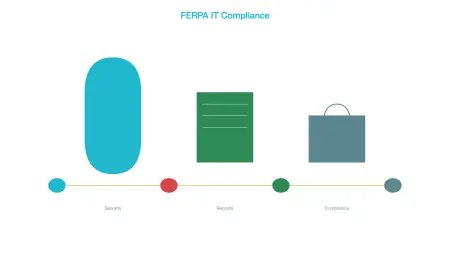AI-Powered Call Quality Analytics: Transforming Contact Center Performance
Discover how AI-powered call quality analytics revolutionize contact center performance by providing real-time insights, improving agent efficiency, and enhancing customer satisfaction.

In the dynamic landscape of customer service, the contact center stands as the frontline of customer interaction. Historically, ensuring high-quality interactions has been a labor-intensive, often subjective, endeavor. Supervisors would manually review a small fraction of calls, attempting to gauge agent performance, adherence to scripts, and overall customer satisfaction. This traditional approach, while foundational, is inherently limited in scope, consistency, and efficiency.
Enter AI-powered call quality analytics. This revolutionary technology is fundamentally changing how contact centers operate, moving beyond reactive problem-solving to proactive optimization. By leveraging artificial intelligence, machine learning, and natural language processing, businesses can now analyze 100% of their customer interactions, extract deep insights, and drive unparalleled improvements in agent performance, operational efficiency, and, most importantly, customer experience.
The Inadequacies of Traditional Call Quality Monitoring
Before delving into the transformative power of AI, it's crucial to understand the challenges inherent in conventional call quality monitoring:
-
Limited Sample Size: Manual reviews typically cover only 1-5% of total calls due to time and resource constraints. This small sample size often fails to represent the true quality landscape, missing critical trends or recurring issues.
-
Subjectivity and Inconsistency: Quality scores can vary significantly between different human evaluators, leading to inconsistent feedback for agents and an unreliable measure of overall performance.
-
Labor-Intensive and Costly: The sheer volume of calls makes comprehensive manual review impractical, tying up valuable supervisory resources that could be better spent on coaching and strategic initiatives.
-
Lagging Insights: Feedback is often delivered days or weeks after the call, making it difficult for agents to remember specific interactions and apply improvements effectively.
-
Difficulty Identifying Systemic Issues: Without a holistic view of all interactions, it's challenging to pinpoint organization-wide process flaws, training gaps, or common customer pain points.
These limitations restrict a contact center's ability to truly understand its performance, leading to missed opportunities for improvement, higher agent attrition, and potentially, dissatisfied customers.
The Dawn of AI-Powered Call Quality Analytics
AI-powered call quality analytics represents a paradigm shift. It involves the deployment of sophisticated AI algorithms to automatically transcribe, analyze, and evaluate every single customer interaction – voice, chat, and email – at scale. This goes far beyond simple keyword spotting; it delves into the nuances of conversations, understanding sentiment, intent, emotion, and compliance.
At its core, the technology operates by:
-
Speech-to-Text Transcription: Converting spoken words into text, forming the foundation for all subsequent analysis.
-
Natural Language Processing (NLP) & Natural Language Understanding (NLU): Algorithms process the transcribed text to understand context, identify topics, extract sentiment (positive, negative, neutral), recognize intent, and flag specific keywords or phrases.
-
Emotion and Pacing Analysis: Beyond words, AI can analyze vocal characteristics like tone, pitch, volume, and speaking pace to detect stress, frustration, empathy, or excitement in both agents and customers. It can also identify moments of silence or excessive talking.
-
Rule-Based Compliance Monitoring: Customizable rules allow the AI to automatically detect adherence to scripts, compliance with regulatory requirements (e.g., PCI DSS, HIPAA), or the absence of mandatory disclosures.
By combining these capabilities, AI-powered call quality analytics provides an unprecedented level of insight into contact center operations.
Transforming Contact Center Performance: Key Benefits
The integration of AI-powered call quality analytics delivers a cascade of benefits that fundamentally transform contact center performance:
1. Enhanced AI Call Center Quality Assurance
One of the most significant advantages is the ability to achieve comprehensive and objective AI call center quality assurance. Instead of sampling, businesses can analyze 100% of interactions. This means no critical conversation goes unexamined, providing a complete and accurate picture of overall quality. The AI applies consistent scoring criteria, eliminating human bias and subjectivity, ensuring fair and transparent evaluations for all agents. Furthermore, insights are delivered rapidly, often in near real-time, allowing for immediate intervention and course correction.
2. Automated Call Quality Monitoring
The power of automated call quality monitoring cannot be overstated. Supervisors are freed from the drudgery of manual listening, allowing them to focus on high-value tasks such as coaching, training, and strategic planning. The system can automatically flag calls that require human attention (e.g., highly negative sentiment, compliance breaches, or unresolved issues), prioritizing review efforts. This automation leads to substantial efficiency gains and cost savings, as resources are optimized and operational bottlenecks are reduced. It also offers unparalleled scalability, effortlessly handling fluctuations in call volume without proportional increases in human oversight.
3. Proactive Agent Performance Management
Agent performance management is revolutionized by AI. The detailed, data-driven insights provide a granular understanding of each agent's strengths and weaknesses. Supervisors can pinpoint exact moments in calls where an agent excelled or struggled, enabling highly personalized and targeted coaching sessions. For example, AI can highlight agents who consistently use empathetic language, or those who struggle with specific product inquiries. This allows for the development of tailored training programs addressing common skill gaps across the entire team, leading to a more competent and confident workforce. Improved agent engagement, fairer evaluations, and opportunities for continuous improvement contribute directly to higher agent retention and job satisfaction.
4. Superior Customer Experience
Ultimately, the goal of any contact center is to deliver an exceptional customer experience. AI-powered call quality analytics directly contributes to this by:
-
Identifying Customer Pain Points: AI can quickly aggregate common themes from negative interactions, revealing systemic issues with products, services, or processes that frustrate customers.
-
Optimizing Customer Journeys: By understanding conversational flows and customer sentiment across numerous interactions, businesses can refine scripts, improve self-service options, and streamline customer journeys.
-
Improving First Call Resolution (FCR) and Average Handle Time (AHT): By identifying root causes of repeat calls or lengthy interactions, AI helps optimize processes and agent training, leading to quicker resolutions and more efficient calls.
-
Predicting Churn: Sentiment analysis can even act as an early warning system, flagging customers who are highly frustrated and at risk of churning, allowing for proactive outreach.
5. Operational Efficiency and Compliance
Beyond quality and customer experience, AI contributes significantly to operational efficiency. By automating transcription and analysis, manual labor costs are drastically reduced. The ability to automatically monitor for compliance ensures adherence to legal and industry regulations, mitigating risks and avoiding costly fines. This not only protects the business but also builds trust with customers by ensuring data security and ethical handling of information.
Implementation Considerations
While the benefits are clear, successful implementation of AI-powered call quality analytics requires careful consideration:
-
Data Privacy and Security: Ensuring compliance with regulations like GDPR, CCPA, and HIPAA is paramount. Robust data anonymization and security protocols are essential.
-
Integration: The AI solution must seamlessly integrate with existing CRM, WFM, and communication platforms to provide a unified view of customer interactions.
-
Defining KPIs: Clearly defining what metrics matter most (e.g., FCR, sentiment, compliance adherence) will guide the AI's configuration and ensure actionable insights.
-
Change Management: Introducing AI will impact agents and supervisors. Proper training, transparent communication, and emphasizing the "coaching" aspect over "monitoring" are crucial for adoption.
-
Continuous Improvement: AI models require ongoing training and fine-tuning to adapt to evolving language, customer expectations, and business goals.
The Future is AI-Powered
The evolution of AI-powered call quality analytics is rapid. We are moving towards predictive analytics, where AI can forecast potential issues before they escalate. Integration with conversational AI (like chatbots and virtual agents) will create a seamless customer journey across all touchpoints, with insights from human interactions feeding back into automated systems for continuous improvement. AI is becoming an indispensable component of a comprehensive customer experience strategy, enabling businesses to not only meet but exceed customer expectations in an increasingly competitive landscape.
In conclusion, the days of manual, limited call quality monitoring are rapidly becoming a relic of the past. AI-powered call quality analytics stands as a testament to how technology can revolutionize core business functions, driving unparalleled ai call center quality assurance, enabling truly automated call quality monitoring, and fostering robust, proactive agent performance management. For any organization aiming to deliver exceptional customer service, optimize operations, and gain a competitive edge, embracing this transformative technology is no longer an option – it is a strategic imperative.
What's Your Reaction?
 Like
0
Like
0
 Dislike
0
Dislike
0
 Love
0
Love
0
 Funny
0
Funny
0
 Angry
0
Angry
0
 Sad
0
Sad
0
 Wow
0
Wow
0


















































